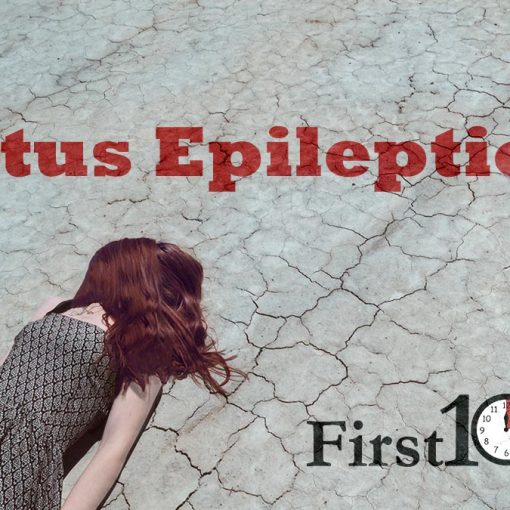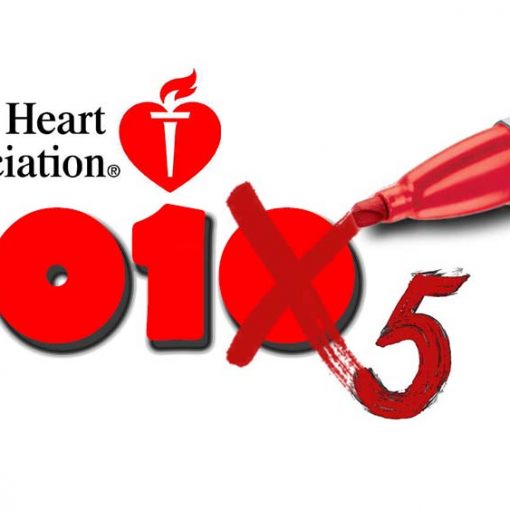This is a special edition of the Research Roundup from the final SMACC conference. We invited a group of the most interesting and intelligent doctors we knew to join us for a podcast. Each guest suggested a paper worth discussing. Unlike other episodes, where you have to listen to Casey and I ramble on, this episode has some true talent and expertise, so I would strongly recommend listening to the podcast version, rather than just reading my opinions. However, if you prefer reading, here is my summary.
What? Breathing is important?
Casey JD, Janz DR, Russell DW, et al. Bag-Mask Ventilation during Tracheal Intubation of Critically Ill Adults. The New England journal of medicine. 2019; 380(9):811-821. [pubmed]
This paper was recommended by Simon Carley (@EMManchester).
This paper is probably practice changing for a lot of people, but there are a lot of fine points that could completely change your interpretation. This is a multi-centre, unblinded, RCT looking at RSI in ICU patients. They randomized patients to either get bag valve mask ventilations during the apneic period, or not, and the BVM group did significantly better in terms of the number of patients becoming hypoxic in the peri-intubation period. However, there are a number of caveats, so before changing your practice, I suggest reading the full post.
Bottom line: I don’t think a one size fits all strategy is going to work here. My focus will still be great pre-oxygenation, denitrogenation, and maximized first pass success, with a clear backup plan. In select patients at higher risk of desaturation, and with low risk of aspiration, I will probably include BVM ventilations as part of my RSI.
The full write up can be found here.
This paper is about… what? Another ECG? Hold on, the phone is ringing.
Westbrook JI, Raban MZ, Walter SR, Douglas H. Task errors by emergency physicians are associated with interruptions, multitasking, fatigue and working memory capacity: a prospective, direct observation study. BMJ quality & safety. 2018; 27(8):655-663. [pubmed]
This paper was suggested by Andy Tagg (@andrewjtagg).
Methods: In this study they had a researcher follow doctors around in the emergency department to observe multitasking and interruptions. They followed 36 physicians (including house officers, registrars, and consultants) in 3 hours observation periods (weekday only) in one emergency department in Sydney, Australia.
Results: Although each doctor was followed between 1 and 3 times, only 28 of the 36 were observed prescribing (either medications or fluids). This seems very low to me. I am pretty sure there is no 3 hour period I work that doesn’t involve a prescription of some sort, although I would be interested to find out if I am right. There were 8 interruptions per hour, which also seems low to me, but depends a lot on what you call an interruption. There were actually slightly more interruptions (9.4/hr) while prescribing, although it isn’t clear to me why. (I guess you are just sitting at a desk, so even though you are engaged in an important activity, it doesn’t look like it). There were also A LOT of prescription errors in this study (208 errors in 239 total prescriptions, or 0.4 errors per patients), but most (94%) were trivial procedural things. Multitasking increased the rate of procedural prescription errors, but interruptions didn’t. On the other hand, interruptions increased the rate of important clinical errors.
They also looked at the effect of sleep. Overall, people just aren’t getting enough sleep, with a mean of 6.6 hours a night. Doctors with lower than average sleep the night before had more than a 15 fold increase in the rate of prescribing errors.
Bottom line: I am not sure how important these errors really were, but interruptions, multi-tasking, and lack of sleep all increased errors. However, aside from sleeping more, the paper doesn’t provide any real solutions.
The value and art of deliberate clinical inertia
Keijzers G, Cullen L, Egerton-Warburton D, Fatovich DM. Don’t just do something, stand there! The value and art of deliberate clinical inertia. Emergency Medicine Australasia. 2018; 30(2):273-278. [pubmed]
This paper was recommended by Ken Milne (@TheSGEM)
“Don’t just do something, stand there” is one of my favourite phrases in medicine. I think I like “deliberate clinical inertia” even more. Behind these clever phrases lies an important article tackling complex clinical behaviour. Doctors and patients alike are biased toward more – both in terms of testing and treatment – despite marginal benefits (at best) with a lot of what we do. We consistently overestimate the benefits of what we do, and overlook or underestimate the harms. This paper starts a discussion on how we can increase inaction in medicine to help our patients. Some strategies include better education about bayesian thinking and pretest probabilities, reframing “doing nothing” into “doing something” as we always offer our patients things like reassurance and symptom control, a culture change away from shaming colleagues for “misses” when good practice will always involve diagnoses that aren’t made on the first visit, and involving our patients in decision making.
Bottom line: The culture of medicine drives us to do too much, ultimately hurting our patients. We need to find ways to change that culture.
This paper is part of an excellent 3 part series. I will probably cover part 2 and 3 in more detail in the future, but if you are in interested in reading them now, they are:
Egerton-Warburton D, Cullen L, Keijzers G, Fatovich DM. ‘What the hell is water?’ How to use deliberate clinical inertia in common emergency department situations. Emergency medicine Australasia : EMA. 2018; 30(3):426-430. [pubmed]
Keijzers G, Fatovich DM, Egerton-Warburton D, et al. Deliberate clinical inertia: Using meta-cognition to improve decision-making. Emergency medicine Australasia : EMA. 2018; 30(4):585-590. [pubmed]
I am numb inside
Motov S, Fassassi C, Drapkin J, et al. Comparison of intravenous lidocaine/ketorolac combination to either analgesic alone for suspected renal colic pain in the ED. The American journal of emergency medicine. 2019; [pubmed]
This paper was recommended by Natalie May (@_NMay), but sadly she was unable to join us for the podcast recording. (I acted as a very poor substitute.)
This is a randomized, double-blind trial comparing lidocaine, ketorolac, or a combination of both for the treatment of pain from renal colic. They included a convenience sample (daytime hours) of 150 patients aged 18-64 with pain the ED doctor thought was from renal colic and warranted IV analgesia. The lidocaine dose was 1.5mg/kg, given over 15 minutes. The ketorolac dose was 30 mg (a surprise from this group) given as an IV push. For the primary outcome, pain at 30 minutes, the combination was better than lidocaine alone, but not better than ketorolac. Pain in the combination group fell from 8.4 to 3.1, in the ketorolac group 7.9 to 3.9, and in the lidocaine group 8.4 to 5.5. All changes were both clinically and statistically significant. Lidocaine resulted in more side effects (mostly dizziness, nausea, and vomiting).
In my mind, this wasn’t the right study to run. I wouldn’t have expected lidocaine to beat ketorolac, and even if it was similar, I can’t see why it would replace an NSAID as my first line therapy. The question is more what to do as a second line. I still end up using morphine in a lot of these patients. I would have wanted to see a comparison between lidocaine and morphine as the second line agent.
Bottom line: Lidocaine is certainly not part of my routine management of kidney stones. There may be some role in refractory cases, or in patients with multiple allergies.
Resuscitation education
Cheng A, Nadkarni VM, Mancini MB, et al. Resuscitation Education Science: Educational Strategies to Improve Outcomes From Cardiac Arrest: A Scientific Statement From the American Heart Association. Circulation. 2018; 138(6):e82-e122. [pubmed] [free full text]
This paper was recommended by Victoria Brazil (@SocraticEM).
This is a very long, but brilliant paper, and if you are involved in education at all, I suggest checking it out. (You might want to start with the summary, which can be found here.) It summarizes a large range of educational literature, and includes a lot of important concepts, like spaced learning, contextual learning, overlearning, and deliberate practice. I will have my own summary blog post out next week. If you are interesting in more education content right now, you can read the post “Making it Stick”.
But It Makes Sense Physiologically…
Crager SE, Hoffman JR. But It Makes Sense Physiologically…. Annals of emergency medicine. 2018; 72(4):490-492. [pubmed] [free full text]
This is the first of 2 papers recommended by Michelle Johnston (@Eleytherius). Aside: If you haven’t read Michelle’s novel Dustfall, it is brilliant.
I think this is a good paper for the SMACC setting. The FOAMed community has a lot of strong supporters of bedside ultrasound. There are incredible online resources for learning these skills. However, that enthusiasm often means that we are a little less critical of the role of POCUS, and the paucity of evidence that it results in patient important benefit. This editorial is free to read, and I strongly recommend it. It tackles the idea of physiologic plausibility, and the common refrain when we add new tests: “how could it possibly hurt?” It also contains a beautiful description of evidence based medicine, and why we should never rely on a single study.
A few specific points. There are going to be harms from POCUS, including diversion of time, energy, and attention away from more important interventions, false positives, false negatives, and incidental findings that result in more downstream testing. I think there are also clearly benefits, but we should be cautious, because for the most part, those benefits have not been proven.
This paper also give us 4 prerequisites for physiologic reasoning to be helpful (all assuming our understanding of the physiology is correct):
- The data must mean what we think it does (eg, CVP is not actually a marker of fluid responsiveness).
- The data must be obtained reliably and accurately (a potential problem with POCUS).
- The data must be interpreted correctly.
- The appropriate management in response to the data must be readily apparent (eg, different doctors would often look at the same Swan-Ganz readings and suggest different treatments).
Bottom line: “We should all understand, and take very seriously, two very important, and very disconcerting, truths: that ideas that seem logically unassailable frequently prove to be wrong, and that interventions that seem completely benign can in fact lead to substantial harm.”
Time’s up
Madsen TE, Linden JA, Rounds K, et al. Current Status of Gender and Racial/Ethnic Disparities Among Academic Emergency Medicine Physicians. Academic emergency medicine. 2017; 24(10):1182-1192. [pubmed]
This paper was not so much suggested by Lauren Westafer (@LWestafer), as we chose it for her (because she is an author on the paper).
There is a gender pay gap in medicine. That is a sad reality, and this is another study proving it. (We covered a similar paper recently on the SGEM). It was a survey (with only a 50% response rate) of academic emergency departments in the United States. There were fewer females at the professor level (7% vs 17%). More women were fellowship trained (37% vs 31%), but fewer held administrative roles (47% vs 57%). Women work the same number of hours as men, although this data does not capture the type of hours, and in our speciality there can be a big difference in earnings when people volunteer to do more nights or weekends. I’ll also note that capturing activities while at work is really complicated. However, if you try to adjust for payments by the type of activity performed, you are assuming that current pay structures are equitable, well considered, or good for patients (and I’m not sure any of which are well founded). Women earned less than men at all academic levels. After all adjustments, women earned on average $19,000 less than men for the same type of work. Ultimately, this data is interesting and distressing. The science side of me has to point of that we are looking at associations, not cause and effect. There are likely some confounders complicating the issue, but the gap is clearly there. Unfortunately, the bigger question is much more difficult: how do we fix it? This data doesn’t tell us. I think it’s time to move beyond data collection and into action, but I’m not sure what the appropriate action is.
Bottom line: There is a gender pay gap in medicine that needs to be addressed (although it isn’t clear how).
Which is better? Noradrenaline or norepinephrine?
Permpikul C, Tongyoo S, Viarasilpa T, Trainarongsakul T, Chakorn T, Udompanturak S. Early Use of Norepinephrine in Septic Shock Resuscitation (CENSER) : A Randomized Trial. Am J Respir Crit Care Med. 2019;
This paper was suggested by Casey Parker (@broomedocs).
This is a single centre, double blind RCT of patients with septic shock, comparing early administration of a fixed dose of norepinephrine to placebo in patients getting otherwise standard sepsis care. The primary outcome was resolution of shock, and significantly favoured the early norepinephrine group. Although this is not a patient oriented outcome, there were hints that patient oriented outcomes were also improved. Adverse events were also lower in the norepinephrine group.
Bottom line: This single centre trial shouldn’t lead to wholesale changes in our sepsis protocols, but it is promising, and will move me towards using norepinephrine earlier in septic shock patients.
You can read the full write up here.
A dismal look into the future of ACLS
Hörburger D, Haslinger J, Bickel H, et al. Where no guideline has gone before: retrospective analysis of resuscitation in the 24th century. Resuscitation. 2014; 85(12):1790-4. [pubmed]
This is the second paper recommended by Michelle Johnston (@Eleytherius). She is a superstar. She gets to pick 2.
Star Trek meets CPR. (I have to admit, I am more of a Star Wars guy myself). This is an observational trial looking at cardiac arrests of bi-pedal humanoid species in 3 Star Trek series. (It isn’t clear whether it was retrospective, as it was done by video review, or prospective, as these arrests all happen in the future.) They excluded arrests during battles, mass casualties, and “if the patient died due to complete physical annihilation by energy weapons or physical encasement into solid objects.” They include 96 arrests. The etiologies are significantly different from those we see today (40% trauma, 24% energy weapons, 8% toxins). They don’t distinguish between in hospital/ship and out of hospital/ship cardiac arrests, because the transporter completely eliminates transfer times. Much like real life, 91 arrests were witnessed, but only 17 had any attempt at resuscitation by bystanders, so it looks like we will still be struggling to get bystanders involved in the distant future. Only 5 cases had chest compressions and 1 patient received defibrillation. Despite that, there was a 13% rate of ROSC. Of the 12 patients with ROSC, 2 were lost to follow up, and 1 subsequently died, but 9 had good neurologic outcomes and were still alive at the end of the season. (As we have seen in other TV series, the neurologic prognosis is far better than real life). Survival rates were only 1% when cardiac arrest was diagnosed using current clinical methods, but 9% when a cause was diagnosed with technology (the tricorder) so maybe there is some hope for the future.
Bottom line: Live long and prosper my friends.
Cheesy Joke of the Month
How many ears does Mr. Spock have?
Three. A left ear, a right ear, and a final front ear.
Morgenstern, J. Research Roundup (#SMACC 2019 edition), First10EM, April 3, 2019. Available at:
https://doi.org/10.51684/FIRS.8292





